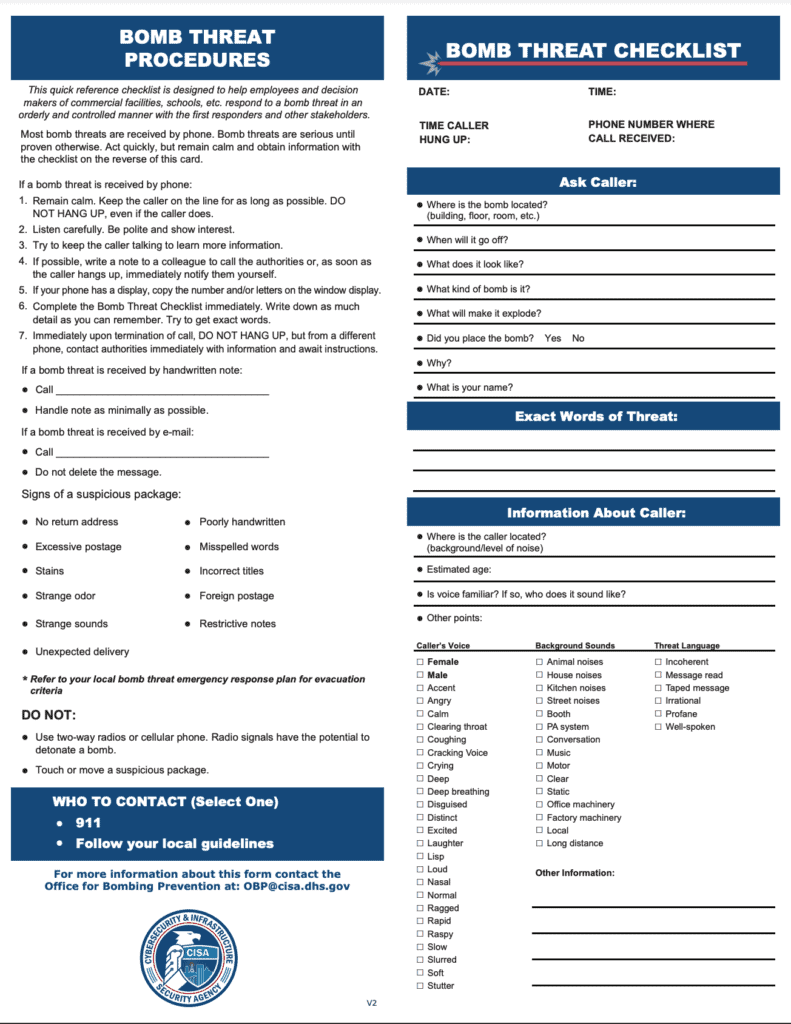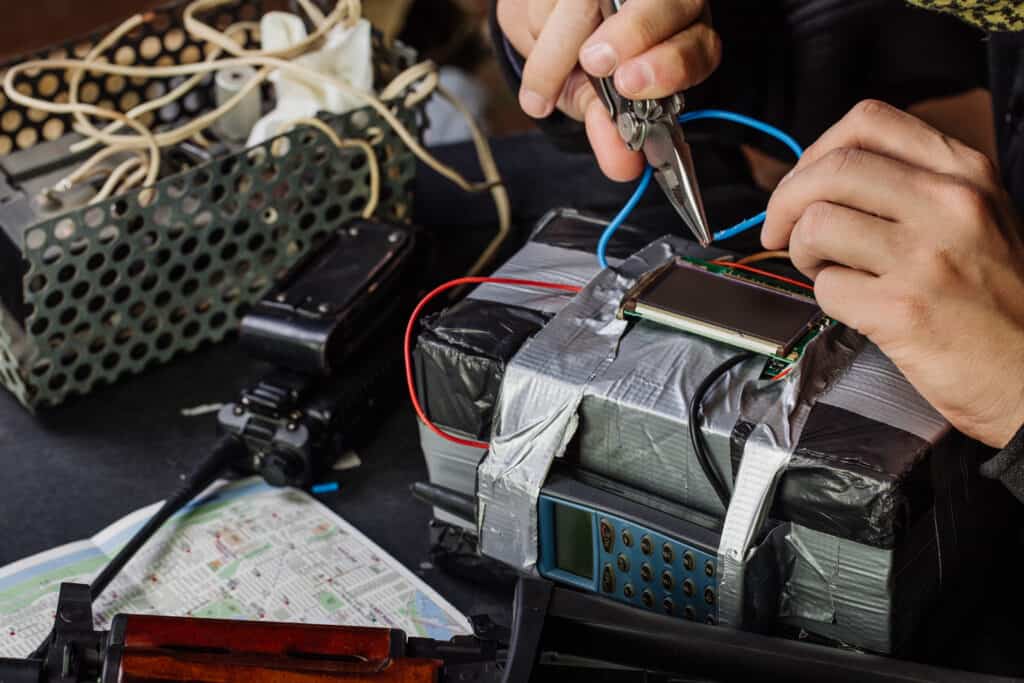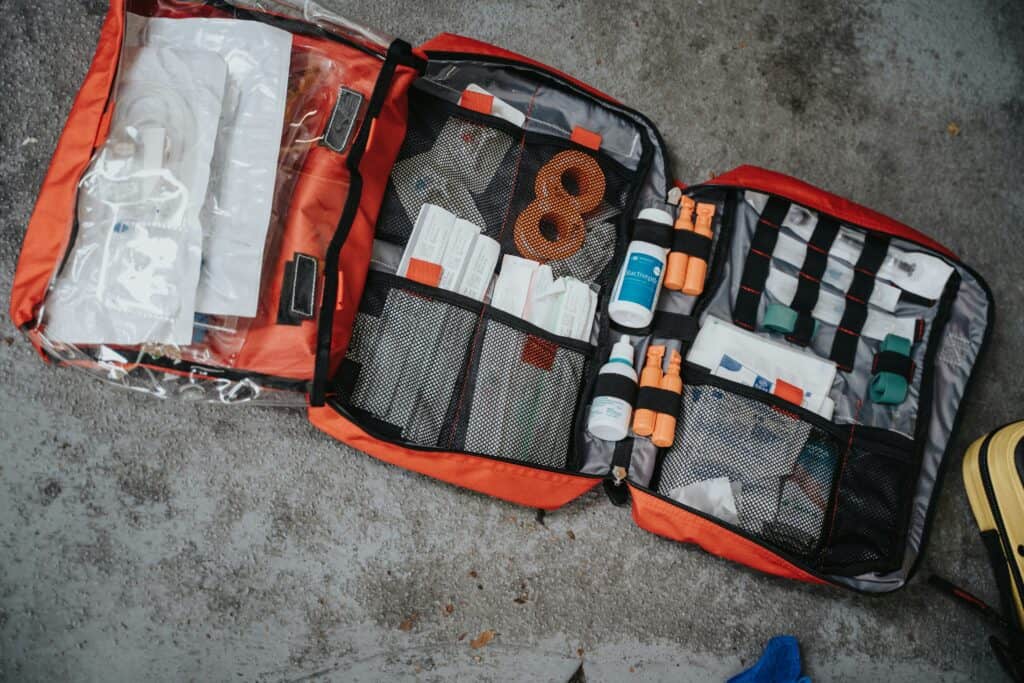A bomb threat is a serious situation that requires immediate attention and appropriate action. Knowing how to respond in such circumstances determines not only the safety of individuals but also the extent of potential damage. This article discusses the crucial steps to take in case of receiving a bomb threat, focusing on effective communication, coordination with law enforcement, and maintaining a safe environment for everyone involved.
In a world where security threats are increasingly common, it is essential to be prepared for any potential emergencies. Bomb threats can impact various sectors, including businesses, houses of worship, schools, and public events. Developing an understanding of how to manage these situations allows individuals to contribute effectively to safety efforts and mitigate potential risks.
Recognizing a Bomb Threat
Phone Threats
It’s crucial to stay calm and attentive if you receive a bomb threat over the telephone. Obtain as much information as possible, including the caller’s voice, background noises, and specific details about the threat. Take note of the time and date of the call. After the conversation, immediately contact 9-1-1 or your local law enforcement to report the incident.
Suspicious Packages
Suspicious packages can come in various shapes and sizes. Be vigilant and look for the following indicators of a suspicious package:
- Poorly wrapped or sealed packages
- Excessive postage
- No return address or a deceptive return address
- Strange powders, odors, or stains
- Unusual weight, either too light or too heavy
- Protruding wires or other irregular features
- Packages marked with threatening messages
If you come across a suspicious package, do not touch or attempt to open it. Distance yourself from the area and notify authorities immediately.
Suspicious Items
In addition to suspicious packages, stay alert for any items that may pose a threat. Suspicious items could include bags, suitcases, or other containers left unattended in a public space. Pay attention to items that have exposed wires, ticking sounds, or other unusual characteristics.
When you identify a suspicious item, maintain a safe distance, and contact 9-1-1 or your local law enforcement. Communicate all relevant information, and follow their instructions. Keep in mind that false alarms can occur, but it is better to be cautious and report any potential bomb threat to ensure public safety.
What to Do During a Bomb Threat
Remain Calm and Listen Carefully
It is crucial to remain calm during a bomb threat. Panic could lead to misunderstandings or mistakes that could endanger lives. Take a deep breath and stay focused on the situation at hand. Listen carefully to the person making the threat, as every detail could prove to be important later.
Gather Information
While speaking with the caller or handling the threat, gather as much information as possible. Ask questions such as:
- What kind of bomb is it?
- Did you place the bomb?
- What does it look like?
- When is the bomb set to go off?
Pay attention to background noises or any distinguishing details about their voice. These details could help the authorities in their investigation.
Call Emergency Services
Once you have gathered information, immediately call emergency services, specifically 9-1-1 or your local law enforcement agency. Provide them with the information you have collected, as well as any additional details about the situation. Follow their instructions and cooperate with the officials on-scene. The Department of Homeland Security also suggests contacting a facility supervisor if law enforcement cannot be reached immediately.
Preparing for a Bomb Threat
Bomb Threat Checklist
It is crucial to stay calm and follow a systematic checklist during a bomb threat situation. The Department of Homeland Security (DHS) provides a Bomb Threat Checklist for guiding people through the process. Be sure to keep a copy of this checklist at your workplace or other potential target areas. Here are the key steps to follow:
- Observe the surroundings: Check for any unusual or suspicious items, and note the details of any observed threats.
- Call 9-1-1: Notify the local law enforcement authorities immediately.
- Inform the facility supervisor: Notify your facility supervisor or the person in charge, and follow their instructions.
- Evacuate if necessary: Follow the established emergency plan, and evacuate the premises in an orderly manner, if advised by law enforcement or your facility supervisor.
- Cooperate with first responders: Provide detailed information about the threat and any observed suspicious items to first responders and law enforcement.

Department of Homeland Security Guidelines
The Department of Homeland Security also offers guidelines for preparing against bomb threats. Incorporate these measures into your emergency plan to better prepare yourself:
- Develop an emergency plan: Collaborate with your facility supervisor or security personnel to create an emergency plan that covers various scenarios, including a bomb threat.
- Establish communication channels: Set up clear communication channels with employees, first responders, and law enforcement agencies.
- Train employees: Conduct regular training and drills to familiarize employees with the emergency plan and response procedures.
- Review security measures: Assess your facility’s security measures, including access control, surveillance, and alarm systems. Make improvements as necessary.
- Coordinate with local law enforcement: Communicate with local law enforcement about possible threats and emergency response protocols.
By following the Bomb Threat Checklist and adhering to the Department of Homeland Security guidelines, you can better prepare your organization for potential bomb threats and minimize risk. Remember to remain confident and clear while following the established procedures in such situations.
Evacuation Protocols
Deciding to Evacuate
In the event of a bomb threat, the decision to evacuate should be based on the specific situation and information available. If explicit instructions are provided by authorities or building management, it is essential to follow them. However, if no guidance is provided and individuals feel they are in immediate danger, it is crucial to remain calm and make the decision to evacuate.
Evacuate the Area
Upon deciding to evacuate, individuals should take the following steps to ensure their safety and the safety of others:
- Remain calm: A calm demeanor can help prevent panic and allow for a more organized evacuation.
- Alert others: Informing those around you of the threat and the need to evacuate can help ensure everyone’s safety.
- Follow established evacuation routes: Buildings typically have designated evacuation routes and exits. Stick to these routes to ensure a safe and efficient departure.
- Leave personal belongings behind: While it may be tempting to collect personal items, it is crucial to prioritize safety and evacuate immediately.
- Increase distance from the threat: Distance and protective cover are the best ways to reduce injury, so move as far away from the potential danger as possible.
Utilizing these evacuation protocols during a bomb threat can help create a safer environment and minimize the potential harm to individuals. Remember, in such situations, staying calm and following established evacuation routes are key to ensuring safety.
Dealing with Suspicious Packages
When faced with a suspicious package, it is crucial to prioritize safety and follow proper procedures. This section will discuss how to handle suspicious packages during a bomb threat while maintaining a confident, knowledgeable, neutral, and clear tone.
Do Not Touch the Package
Upon encountering a suspicious package, it is essential to refrain from touching it. Touching the package could potentially activate or accelerate a triggering mechanism. Instead, calmly assess the situation and make a mental note of its appearance, location, and any distinguishing features.
Secure the Area
The next step is to secure the area surrounding the suspicious package to ensure the safety of others. This may involve:
- Alerting nearby individuals to evacuate the area
- Contacting your organization’s security department or alerting a supervisor
- Establishing a safe distance from the package, ideally at least 300 feet away
- Preventing unauthorized access to the area until emergency responders arrive
When securing the area, it’s essential to be clear and assertive in your communication while remaining calm and composed. Once the area is secure, promptly report the suspicious package to the appropriate authorities or report a bomb threat if one has been made.
In summary, dealing with suspicious packages during a bomb threat requires a focus on safety and adherence to proper procedures. Remember not to touch the package, secure the area, and alert the appropriate authorities.
Working with Law Enforcement
Campus Police Involvement
When dealing with a bomb threat, it is essential to involve campus police promptly. They have the necessary training and skills to assess the situation and determine the appropriate response. They can also coordinate with other law enforcement agencies as needed to ensure everyone’s safety. In many cases, the campus police will be the first point of contact for any emergency, so it is crucial to keep them informed of all relevant details.
When contacting campus police, provide them with the necessary information such as the exact location of the threat, any specific details about the threat, and the number of people in the area. This information will help campus police determine the best course of action and how to allocate resources effectively.
Communicating with Police
Effective communication with the police is crucial in any emergency, including bomb threats. Be as specific and clear as possible when sharing information about the incident. Include any details that may help the police assess the threat, such as the exact wording of the message, the time it was received, and any other pertinent information that could assist law enforcement in evaluating the situation.
It is essential to listen closely to the instructions provided by the police, as they have the experience and resources necessary to handle such incidents. They may ask you to evacuate the area, stay in place, or carry out specific tasks to ensure everyone’s safety. Keep the lines of communication open, and do not hesitate to ask questions if you are unsure of any instructions given.
Working closely with law enforcement, particularly campus police, is essential in ensuring a swift and effective response to a bomb threat. This collaboration will help maintain the safety of everyone involved in the incident and reduce any potential risks.
Responding to and Investigating a Bomb Threat
Follow Instructions
When faced with a bomb threat, it is crucial to follow any instructions provided by authorities or facility supervisors. These individuals have experience and knowledge in handling such situations and will guide you through the appropriate steps to take. By following their directions, potential danger can be reduced and the situation can be handled more effectively.
Act Quickly and Be Polite
Time is of the essence when dealing with a bomb threat. If you receive a threat, stay calm and collected while gathering as much information as possible. This can include the caller’s voice, background noises, or specific details about the threat. This information is valuable during the investigation process. Additionally, being polite may help keep the caller on the line longer and provide crucial information.
See Something, Say Something
In any situation where there might be a potential bomb threat, it is essential to report any suspicious activity or behavior to the appropriate authorities. This can include unattended bags, abnormal behavior, or abandoned vehicles. Keep in mind the saying “see something, say something” as it can potentially save many lives. Remember to call 9-1-1 or local law enforcement if you believe the threat is imminent and there is no facility supervisor available to guide you.
Identifying and Managing an Explosive Device
Warning Signs of an Explosive Device
When dealing with a potential explosive device, it is crucial to know the warning signs. Familiarizing yourself with these signs can help prevent devastating consequences and save lives. Some warning signs of an explosive device include:
- Unusual objects: Be cautious of unattended packages, bags, or containers, especially in crowded areas or near critical infrastructure.
- Strange odors: Strong chemical smells may indicate an explosive device.
- Visible wiring: Visible wires protruding from a package, bag, or container could indicate a homemade explosive device.
- Unusual sounds: Ticking, buzzing, or other electrical noises may emanate from an explosive device.
Mitigating Risks
To ensure the safety of individuals and property, it is essential to know how to mitigate the risks associated with an explosive device. Below are some steps to follow when encountering a potential explosive device:
- Keep a safe distance: Do not touch, move, or tamper with the suspicious object. Maintain a safe distance and evacuate the immediate area if possible.
- Call 9-1-1 or local law enforcement: If no facility supervisor is available, call 9-1-1 or your local law enforcement. Explain why the object appears suspicious and follow their instructions.
- Notify others: Inform others in the vicinity about the potential threat and urge them to evacuate the area.
- Avoid using electronic devices: Do not use cell phones, radios, or other electronic devices within the vicinity, as they could potentially trigger the explosive device.
- Stay calm and composed: While waiting for the authorities to arrive, remain calm and composed to avoid causing panic or further endangering others.
Remember, when dealing with a potential explosive device, always stay alert, follow safety protocols, and report any suspicious activity to the proper authorities.
Frequently Asked Questions
What are the immediate steps to take in response to a bomb threat?
Upon receiving a bomb threat, the first step is to stay calm and avoid panic. Immediately inform a facility supervisor, if available, or call 9-1-1 or your local law enforcement. Do not touch any suspicious items and evacuate the area following the established evacuation procedures.
How should the bomb threat be reported to authorities?
When reporting a bomb threat to authorities, provide as much information as possible, including details of the threat, the location, and any suspicious items. Follow the instructions given by the authorities, and coordinate with facility supervisors as necessary. CISA recommends calling 9-1-1 in case of bomb threats.
What information should be documented about the threat?
Document the time and date of the threat, the caller’s exact words, any background noises, voice characteristics, and any other relevant details. This information helps authorities in their investigation and aids in determining the credibility of the threat.
What are common evacuation procedures?
Evacuation procedures vary depending on the facility and its specific guidelines. Generally, people should calmly and quickly exit the building using designated exit routes, avoiding elevators, leaving personal belongings behind, and assisting those who need help. Once outside, gather at a designated assembly area, a safe distance away from the building. Do not re-enter the building until authorities give the all-clear signal.
What guidelines should be followed when searching for suspicious items?
Do not touch, move, or attempt to open any suspicious items. Notify authorities immediately about anything that appears out of place or unfamiliar. Maintain a safe distance from any suspicious objects, and follow any instructions provided by the authorities or the facility supervisor.
How can employers prepare employees for potential threats?
Employers can take several measures to prepare employees for potential threats, including providing regular training on bomb threat response procedures, establishing clear communication protocols, and conducting emergency drills. Ensuring that employees are familiar with evacuation routes and assembly areas is crucial for their safety.









